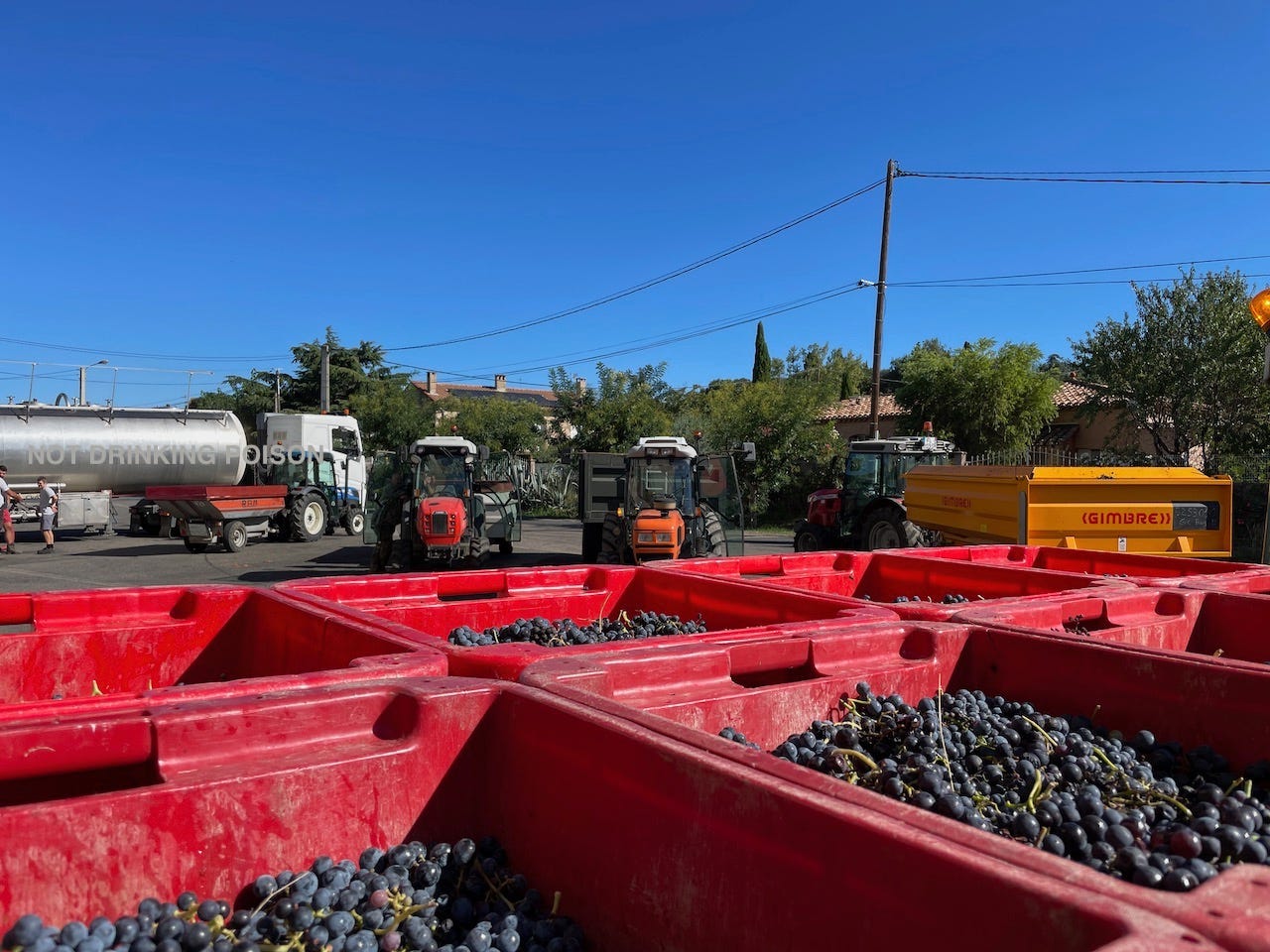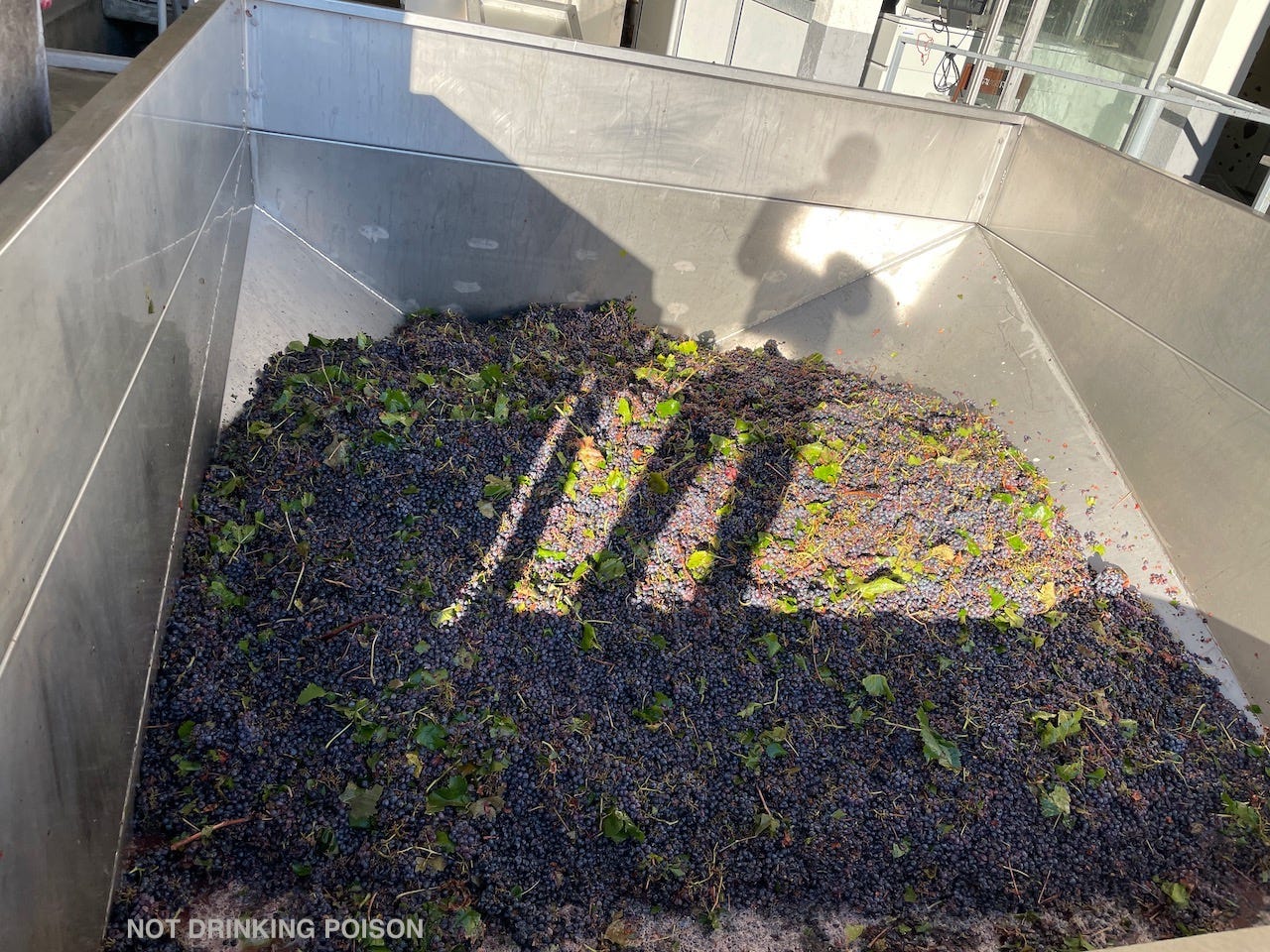A Visit to the Cave Cooperative
Ever wondered how it works when vignerons render their harvest to a cave cooperative? A glimpse of the transaction from harvest 2022 in Faugères.
In 2022, my friends at Clos Fantine acquired several small parcels near the hamlet of La Liquière. The vineyards came with a familiar catch, however: new owners are under obligation to honor the remainder of a previous vigneron’s contract with the local cave cooperative. Breaking the contract would incur a fine that ran into the tens of thousands of euros.
So during harvest this September I wound up accompanying Clos Fantine’s Corine Andrieu on the errand of delivering the grapes from these sites to Faugères cave cooperative Mas Olivier’s vinification site in the nearby town of Laurens.
Selling off the fruit suited Andrieu fine. She and her siblings initiated organic conversion - and a regime of non-plowing - on these sites only recently, and the fruit from them wasn’t yet sufficiently complex for her to regret the loss. She was just mildly concerned, in her usual unflappable way, about the peculiar optics of the scenario. Safely unloading the bins of hand-harvested grapes into the maw of the cooperative’s grape-processors (which are designed for receiving trailers of machine-harvested grapes) was a two-person job, and it took a short while, with the result that we caused a small traffic jam at the cave cooperative that morning.
Behind us in the queue were three idling tractors towing huge trailers of machine-harvested grapes, piloted by unamused men in combat fatigues. The Languedoc I often write about is an enchanting, river-threaded place of wild Mediterranean wonder. These guys inhabit a different Languedoc.
In the Languedoc of cave cooperatives, there are few harvest teams. You just drive a machine through the vineyard rows.
Harvesting machines function by thwacking the bejeezus out of vine branches with a series of rods, causing the fruit to fall into the machine. The yields a harvest that is somewhat pre-macerated, and full of leaves, wood bits, birds’ nests, and other detritus.
At Mas Olivier in Laurens, such harvests are typically loaded via trailer into a grape processor, which is like a cement mixer, only for grapes.

It’s intended to chew them up and create sufficient liquid so that the resultant mass can be easily pumped and manipulated. (In fact, when you work this way, with pulped-up grapes exposed to air and heat and sunlight for extended periods of time, the resultant grape mass must be heavily manipulated with antioxidants and anti-bacterial agents, notably, but not limited to, sulfur dioxide.)
Beside the processor where we loaded the grapes was a sizable pile of vine wood. It is an image to bear in mind whenever you encounter proponents of machine harvesting who opine about its precision.
Incidentally, this is why machine-harvested grapes are unsuitable for carbonic maceration, which requires whole-cluster bunches and intact berries. This is not a controversial opinion: it is enshrined in the rules of cave cooperatives themselves. (Nota bene: intact, whole-cluster bunches are also salutary for many other forms of maceration, including traditional Burgundian small foudre maceration with pigeage. It’s not just carbo that needs those stems.)
Andrieu and I made two trips to Laurens that day in late September. The second was even more ridiculous than the first, because we had barely enough bins to fill the backseat of the family’s junky minivan, let alone the tractor. As we approached, we weren’t actually certain that the cooperative’s weighing systems would accept such puny contributions.
But it was fine in the end. No one made fun of us.
The cave cooperative Mas Olivier spans two separate sites within the Faugères appellation: one in the eponymous village, and this one in Laurens. Its vignerons account for fully 55% of the surface area of the Faugères appellation. Cooperatives throughout France account for more than half of France’s vineyard surface.
Mas Olivier - Les Crus Faugères
Les Près R.D. 909
34480 LAURENS
FURTHER READING
Clos Fantine’s Experimental Pergola
Harvest 2021 with Clos Fantine.
Transhumance at Clos Fantine.
Harvest 2022 with Clos Fantine.









